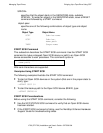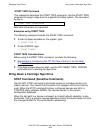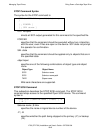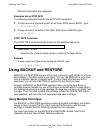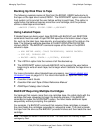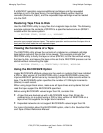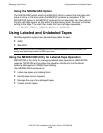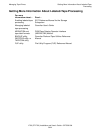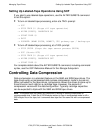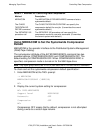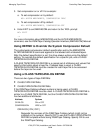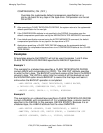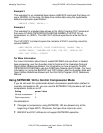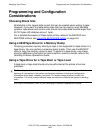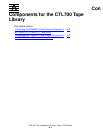
Managing Tape Drives
L700 (CTL700) Installation and User’s Guide—527338-004
9-12
Setting Up Labeled-Tape Operations Using SCF
Setting Up Labeled-Tape Operations Using SCF
If you plan to use labeled-tape operations, use the ALTER SUBSYS command
to set this option:
•
To turn on labeled-tape processing, enter at a TACL prompt:
-> SCF
-> STOP TAPE $* (Stops all tape operation)
-> ALTER $ZZSTO, LABELTAPE ON
-> START TAPE $*
-> EXIT
-> ZSERVER /NAME $ZSVR, NOWAIT, CPU primary-cpu / backup-cpu
•
To turn off labeled-tape processing, at a TACL prompt:
-> STOP $ZSVR (Stops the tape server process $ZSVR)
-> SCF (Starts SCF)
-> STOP TAPE $* (Stops all tape operation)
-> ALTER $ZZSTO, LABELTAPE OFF
-> START TAPE $*
For complete details about the ALTER SUBSYS command, including command
syntax, see the SCF Reference Manual for the Storage Subsystem.
Controlling Data Compression
Data compression is a standard feature on the 9840 and 5259 tape drives. The
tape drives write uncompressed data (unless compression mode is turned on).
When activated for the tape drives, compression allows the drives to store up to
three times as much data on a cartridge tape. However, the amount of
compression varies with the data being written. Typically cartridge capacities
can be expected to triple with the 9840 and 5259 tape drives.
Note. The system does not detect any difference in writing or reading compressed or
uncompressed data. A disk file of 200 kilobytes written to tape in compressed mode is still a
200-kilobyte file on the tape, but it consumes less tape than the same file with uncompressed
data.



